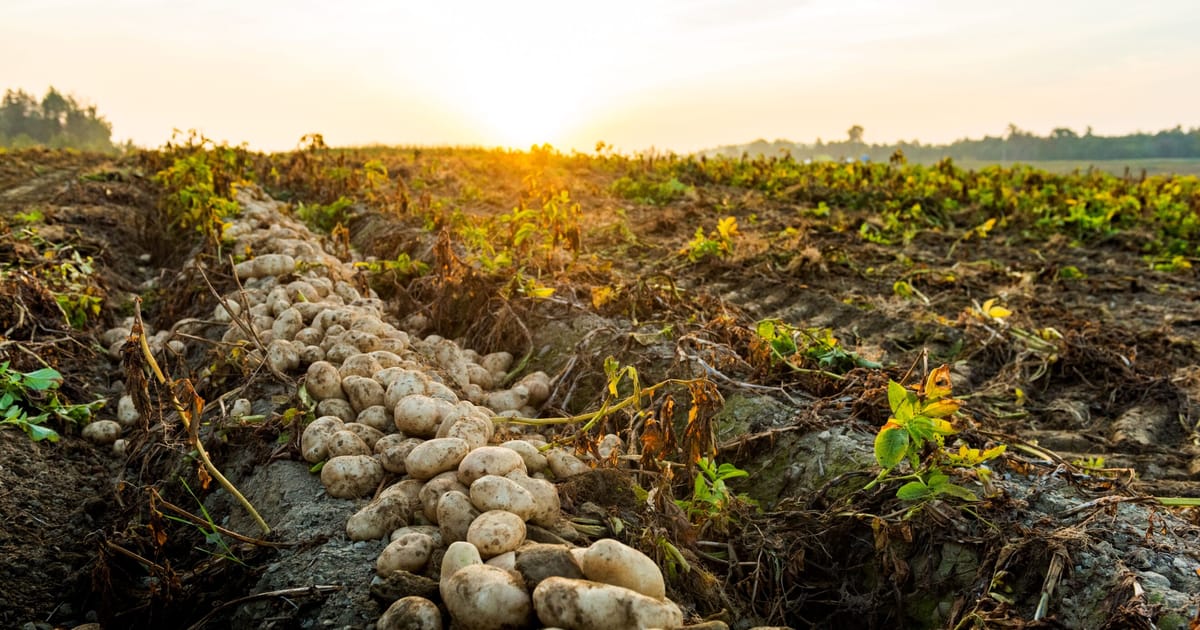Over the past four years, the European Union, guided by its Farm to Fork Strategy and Biodiversity Strategy, has made commendable efforts to transition its agri-food systems toward a model centered around sustainability. While these strategies have set ambitious targets, the potential of regenerative agriculture practices as a catalyst for sustainable farming remains largely untapped and must be a priority for EU policymakers.
A recent study published in Science Advances has revealed a concerning reality: humanity has breached six out of nine planetary boundaries. As we move toward the end of 2023, it’s evident that we are well on our way to witnessing the hottest year on record. We stand at the precipice of a “critical point of no return” concerning climate change, biodiversity loss and water scarcity.
Regenerative agriculture presents a multifaceted solution. It offers the promise of improving soil health, enhancing water quality, promoting biodiversity, eventually sequestering carbon in soils, reducing greenhouse gas emissions, and bolstering the livelihoods of our farmers.
At the intersection of these crises, regenerative agriculture presents a multifaceted solution. It offers the promise of improving soil health, enhancing water quality, promoting biodiversity, eventually sequestering carbon in soils, reducing greenhouse gas emissions, and bolstering the livelihoods of our farmers.
Positive outcomes from trials led by McCain Foods at its two Farms of the Future, dedicated spaces to test regenerative practices with potatoes, underscores the potential of regenerative agriculture. In addition, tests conducted at eight pilot farms in France have started validating local outcomes, with winter cover crops improving soil trafficability when coupled with alternative soil tillage practices, resulting in limited erosion and flooding, and increased soil life, such as earthworms.
In previous trials, drip irrigation demonstrated a 20% reduction of blue water use, while specialized fertilizer placement equipment lowers nitrogen use by 20%. With these outcomes, the adoption of regenerative agriculture could play a crucial role in helping to restore the 60-70% of European soils considered degraded by the European Commission.
The benefits extend beyond the environment, too. According to estimates by the Food and Land Use Coalition, transitioning to regenerative agriculture could contribute $1.2 trillion to the global economy by 2030. In the past year, five pilot farms in France experimented with a no-deep soil tillage method across three different potato varieties, resulting in a yield gain of approximately 11% and a high percentage of significantly larger potatoes.
Tests have also shown that multi-species winter cover crops containing legumes not only positively impacts the soil, but also leads to improved potato yields (+3%). Based on the outcomes of trials at regionally based farms across France, we have no doubt that regenerative agriculture can help produce food more sustainably while having a positive impact on crop yields locally. Ultimately, this also supports farmers’ livelihoods and European food security. This is why, at McCain, we have committed to transitioning to regenerative agriculture practices across 100% of our potato acreage by the end of the decade.
The expansion of regenerative agriculture practices requires a holistic strategy and comprehensive approach, particularly emphasizing the need for a robust regulatory framework supported by clear definitions and measurable benchmarks.
The era of “business as usual” has long passed, and the need for immediate action has become increasingly evident. National and local governments must seize this opportunity by investing and creating the right environment to support the green farming transition. The expansion of regenerative agriculture practices requires a holistic strategy and comprehensive approach, particularly emphasizing the need for a robust regulatory framework supported by clear definitions and measurable benchmarks. This is crucial for establishing credibility among farmers and consumers. Measuring the impact of regenerative farming practices is critical and should align with established and forthcoming EU standards such as the Soil Monitoring Law and Good Agricultural and Environmental Conditions, along with specialized frameworks such as the SAI Regenerative Agriculture Framework. This EU framework should promote the adoption of regenerative agriculture by emphasizing desired outcomes rather than dictating specific practices, recognizing that these must be tailored to suit individual ecosystems.
Among the barriers to regenerative agriculture, the cost (or perceived cost) is commonly cited among farmers. Addressing this issue requires immediate action from policymakers, in collaboration with agri-food companies and financiers. We need to invest in our farmers to de-risk this transition. Built upon a clear definition and measurable key performance indicators, the EU and its member states should seek to provide direct and indirect financial support to reward regenerative agriculture and encourage uptake throughout the supply chain.
This financial support can involve repurposing existing subsidies and incentive programs to reward farmers based on the positive regenerative outcomes and eco-services they deliver. Innovative financial tools should also be deployed by private sector actors and are necessary to bridge the transition. Through a partnership with Rabobank in the Netherlands and with Crédit Agricole in France, McCain farmers transitioning to regenerative agriculture can access interest discounts in addition to existing subsidies. Once the regenerative agriculture practices are established, a US study on wheat demonstrated that they can sustain or even increase farmers’ yields, resulting in a return on investment of 15-20% and 120% higher profits compared with conventional practices.[1]
Finally, recent studies consistently highlight that one of the key barriers to uptake is the lack of knowledge and skills. Our experience underscores the need for broad-based technical training to support not only farmers and agricultural professionals, but also local and regional officials who wield significant influence over the application of guidance and regulations.
While this is not an exhaustive list of necessary measures, selecting an appropriate mix of policy solutions and coordinated action, led by bold leadership, can expedite the adoption of regenerative agriculture practices, offering protection to our natural environment.
The potential for regenerative agriculture to help solve interconnected global challenges is extensive, but its realisation will require partnership and collaboration between farmers, policymakers, businesses, academics and financial institutions. Now is the time for the EU to step up its game. The Soil Monitoring Law, the Carbon Removals Framework, the future policy program of the next Commission and future Common Agriculture Policy all offer opportunities to solve the issue.
We hope that the Commission’s upcoming strategic dialogue on agriculture, which should involve all actors within the food system, will also offer a platform for collaboration and progress. Our commitment to regenerative agriculture is unwavering, and McCain stands ready to work with the EU to push the boundaries and build a more sustainable and resilient future for our supply chain and our planet.
[1] BCG WBCSD study, “Cultivating farmer prosperity: Investing in regenerative agriculture”, May 2023.



